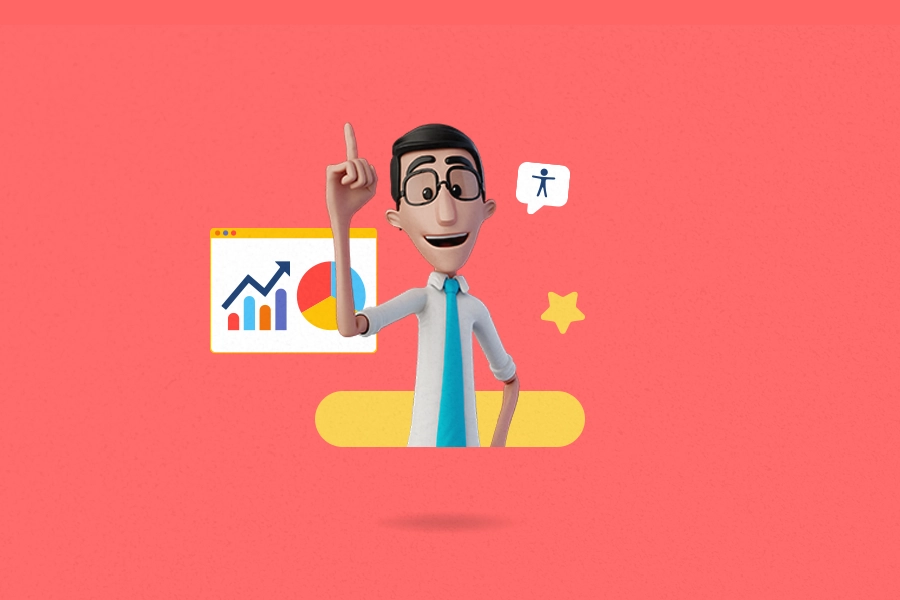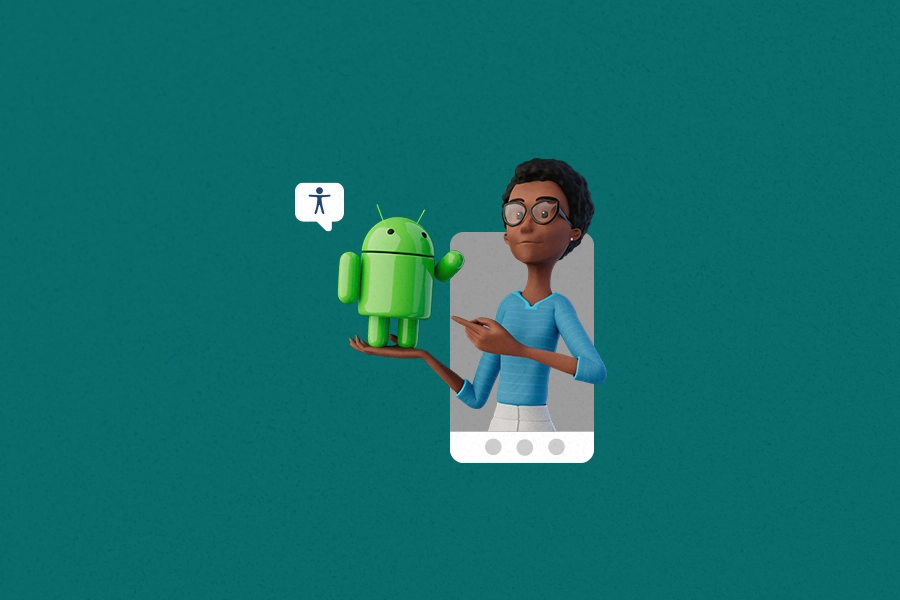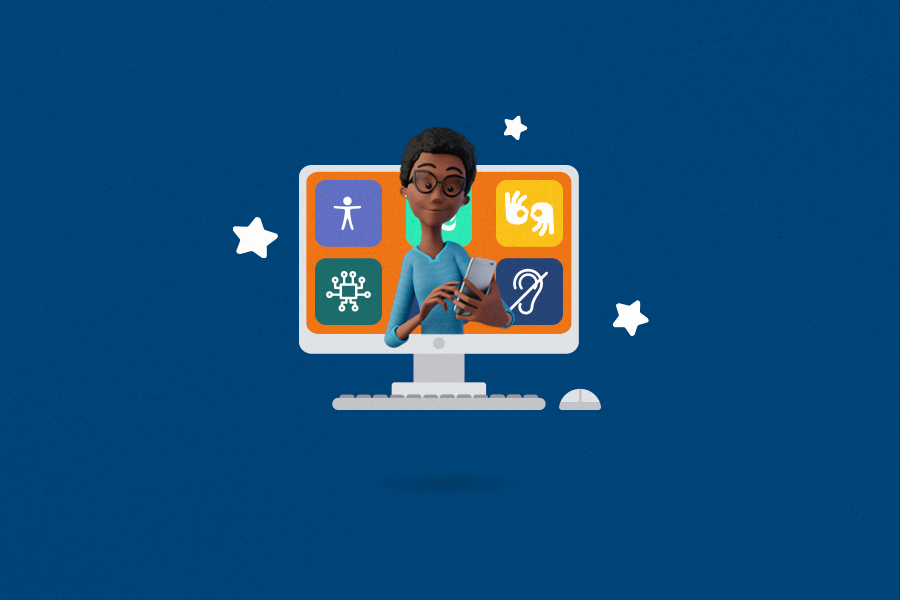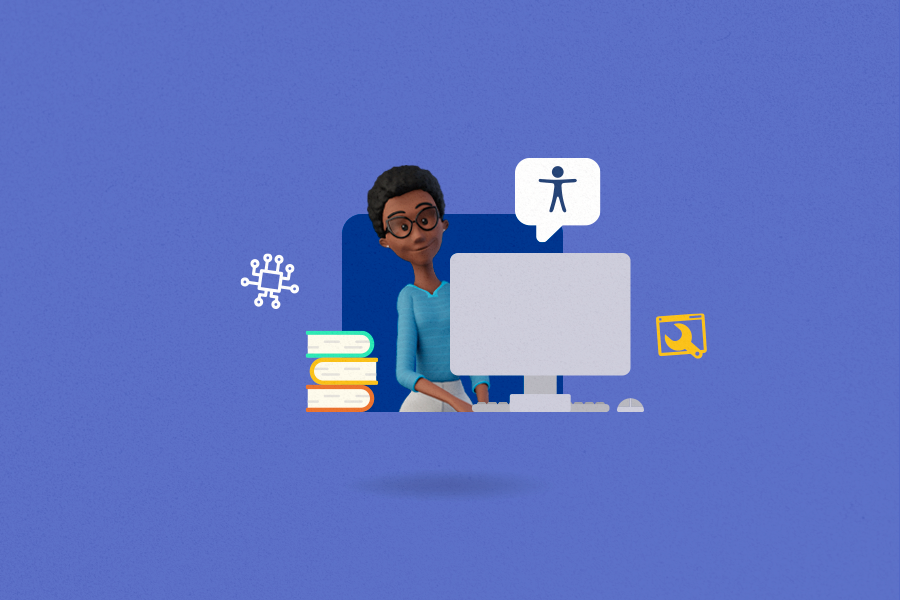
Accessibility Tools: 7 Best Web Accessibility Testing Tools

In America, there is a significant amount of people facing daily challenges to access information and content available on the web, made up of 27% of our country’s population. Do you know who we are talking about? People with disabilities often encounter barriers that make it difficult or even impossible to access websites, applications, and other online resources.
The good news is that technology has played a fundamental role in the search for solutions that promote inclusion and accessibility for all people. In fact, it is a great ally for people with disabilities who want to navigate the web. So, how about we dive into what are the main tools used and how they have made online spaces more accessible? Let’s do it!
What are the kinds of disabilities?
Before discussing accessibility tools, it is important to understand the different kinds of disabilities that people may have. After all, each of them has specific characteristics and requires different solutions when thinking about accessibility tools, such as assistive technologies. Without further delay, here they are:
Hearing disability or deafness
A hearing disability or deafness affects a person’s ability to hear sounds partially or completely. On the web, individuals with this disability may have difficulties understanding audio content, such as videos, podcasts, phone calls, and even work meetings.
It is worth noting here that not everyone with a hearing disability is deaf. This disability has different degrees of hearing loss, and only those with severe hearing loss typically consider themselves deaf. Oh, and there is another detail! Cultural factors also play an important role in a person identifying themselves as deaf.
Physical disability or motor limitation
Physical disability or motor limitation refers to problems that affect mobility and control of body movements. People with this disability may face difficulties using input devices, popularly known as a keyboard and a computer mouse, or even navigating and moving in a physical or virtual environment.
Intellectual or cognitive disability
Intellectual or cognitive disability is more plural than the other disabilities we have mentioned, encompassing a variety of conditions that can affect a person’s cognitive and intellectual functioning. This can make access to and understanding of online information a challenge, especially on websites with highly technical or complex language, or even when there are many visual elements, such as animated GIFs.
Visual disability or blindness
Visual disability or blindness encompasses problems that affect a person’s ability to see or see clearly. People with visual impairments may need specific adapted resources to access information on websites, such as screen readers and magnifiers or high contrast tools. Don’t worry, we will explain more about them shortly!
What is accessibility and why is it important?
Accessibility, in the web context, refers to the practice of making online resources available and usable for all people, regardless of their abilities or limitations. It is crucial to ensure that everyone has the opportunity to access information, interact with apps, and fully participate in digital life autonomously and equitably. And did you know that web accessibility is not limited to people with disabilities? It also benefits older people, those with low educational attainment, and those with temporary limitations, such as someone with a broken arm.
Accessibility is so important that there are even laws and international guidelines to ensure its implementation. One of the main and most important examples is the Web Content Accessibility Guidelines (WCAG), which establish global accessibility standards to promote digital inclusion.
Basically, accessibility is super important because it allows all people to have equal access and opportunities online. By ensuring that digital resources are accessible, we create an inclusive environment that values and respects diversity. Besides, accessibility enables people with disabilities to actively participate in society, access essential information, education, employment, and online services.
How has technology made online spaces more accessible?
You may have already noticed that technology has played a crucial role in seeking solutions to make online environments more accessible. With the advancement of digital resources, it is now possible to develop innovative tools that overcome accessibility barriers! These tools are called assistive technologies.
They have become essential to ensuring accessibility in the digital world, as they enable many people to navigate the web autonomously, as was not possible before. A very common example, which is not limited to people with disabilities, is captions. Automatic caption generators have made the web much more accessible, both for people with hearing disabilities and those unable to listen to audio content while on public transportation or in a doctor’s office.
What are the main web accessibility tools?
There are numerous web solutions that contribute to making the digital environment more accessible, and it’s time to talk about the main ones, so here we go!
Screen readers
Screen readers are software programs that convert text into audio or braille, allowing people with a visual disability to access information on websites. These tools provide descriptions of images based on alternative text, read textual content, and facilitate navigation through keyboard shortcuts.
Screen magnifiers
Screen magnifiers are tools that increase the size of visual elements on a website, making it easier for people with visual disabilities or low vision to view them. These features allow the user to adjust the zoom according to their individual needs.
Sign Languages website translators
This technology enables the automatic translation of written content on a website into Sign Language. The tool is especially relevant for deaf people who primarily communicate in ASL as it is in the United States, also known as the American Sign Language. The translator allows them to access information visually and comprehensively in their native language. The Hand Talk App and the Hand Talk Plugin are examples of how this technology can be put into practice – check them out!
Caption generation tools for videos
Caption generation tools allow people with hearing disabilities or deafness to access the audio content present in videos and other audiovisual content. They transcribe the audio into text, displaying captions synchronized with the video.
Voice command software
Voice command software allows people with physical disabilities or motor limitations to control devices and interact with online resources using voice commands. This technology facilitates typing, navigation, and interaction with apps and websites, eliminating the need for conventional input devices such as a keyboard and a computer mouse.
Eye trackers
Eye trackers are devices that track a user’s eye movements. This technology allows people with physical disabilities or motor limitations to control the mouse cursor or perform on-screen actions using eye movements. This tool is particularly useful for individuals with paralysis or conditions that affect hand mobility.
Motion trackers
Motion trackers are sensors that capture and track the user’s body movements. These devices are used to interact with virtual environments, allowing people with physical disabilities or motor limitations to control characters in games, navigate through apps, and perform actions through body gestures.
Conclusion
Web accessibility is essential to ensure that all people, regardless of their abilities or limitations, have equal opportunities to access and interact with online resources. The accessibility tools we have mentioned here play a crucial role in breaking down barriers and promoting digital inclusion! In this article we have talked about the main ones, but it is worth remembering that we are constantly learning and evolving and there are also multiple other accessibility solutions out there.
By implementing these solutions, websites and apps can offer an accessible experience to everyone. Besides, it is important to remember that accessibility goes beyond legal obligations. It is a matter of equity and respect to human diversity. If you want to start being a part of the accessibility world now, talk to Hand Talk experts who can help you!


